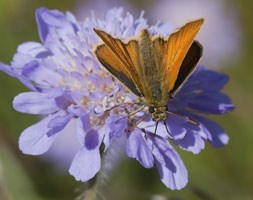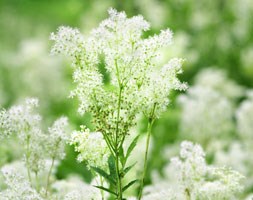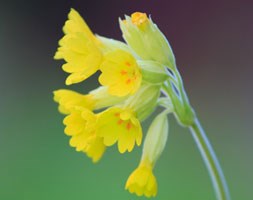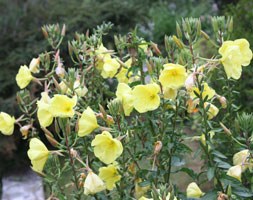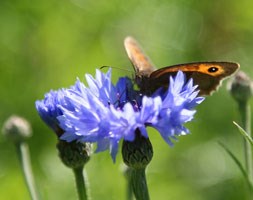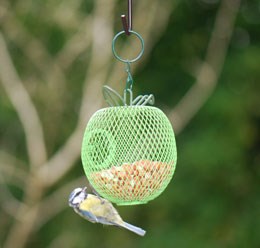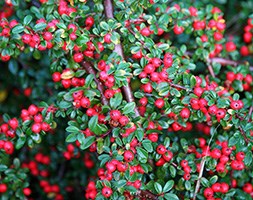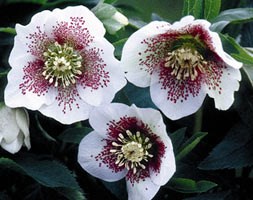Price reductions at Crocus
by Sarah - December 17th, 2014.Filed under: Crocus, Price Reductions.
Crocus has cut the price of these lines
Knautia arvensis (field scabious) was £2.49 now £1.24
Position: full sun Soil: moderately fertile, well-drained, preferably alkaline soil Rate of growth: average Flower colour: bluish-lilac Other features: highly attractive to bees Hardiness: fully hardy Bluish-lilac, honeycomb-like flowerheads on slender stems from July to September and hairy, dull green leaves. This beautiful native field scabious was once used to treat scabies and other skin ailments – hence its common name. Highly attractive to butterflies and bees, it’s perfect for naturalising in a sunny wildflower garden, mixed or herbaceous border. Garden care: When sowing seeds do not use a fertiliser since wildflowers prefer poor soils. In autumn after flowering cut the faded flowerheads down to the ground and compost the dead stems. The photograph shows the small copper butterfly. Sow: March – October Flowering: July – September Approximate quantity: 40 seeds.
Papaver rhoeas (field poppy) was £2.49 now £1.24
Position: full sun Soil: well-drained, preferably poor soil Rate of growth: average Hardiness: fully hardy Once a common sight in cornfields, this brilliant red field poppy is perfect for a sunny wildflower garden or meadow, where it will self-seed freely. Profits from these seeds are used to protect existing wildflower areas and develop new sites where wildflowers can grow. In folklore field poppies were believed to cause thunderstorms. Garden care: When sowing seeds do not use a fertiliser since wildflowers prefer poor soils. In autumn after flowering cut the faded flower-heads down to the ground and compost the dead stems. Sow: March-May or September-October Flowering: August-September or May-July Approximate quantity: 5000 seeds.
Filipendula ulmaria (meadowsweet) was £2.49 now £1.49
Position: full sun or partial shade Soil: moderately-fertile, leafy, moist but well-drained soil . It also tolerates boggy conditions. Rate of growth: average Hardiness: fully hardy A familiar sight on the banks of streams or wet ditches, our native meadowsweet is a vigorous, easy-to-grow plant that’s ideal for boggy areas of the garden or beside water. Handsome, deeply veined leaflets are held on arching stems, top ped with fluffy sprays, up to 25cm across, of creamy-white flowers in summer. T he plant forms clumps of upright growth, but will self seed freely in the the ri ght spot. Garden care: Do not let plants dry out as they may become susceptible to powdery mildew. To control their tendency to seed everywhere, remove the fa ded flowers before they set seed. Sow: March-October Flowering: July – August Approximate quantity: 400 seeds.
Primula veris (cowslip) was £2.49 now £1.49
Position: full sun or partial shade Soil: moist, humus-rich, neutral to acid soil Rate of growth: average Flower colour: deep yellow Other features: mid-green leaves from mid to late spring Hardiness: fully hardy Drooping clusters of scented, deep yellow flowers emerge from rosettes of mid-green leaves from mid to late spring. With the reduction of old pastureland colonies of this lovely once-common native wildflower are decreasing. Cowslips are perfect for a wildflower garden on moist soil, so why not help to reverse this trend? Garden care: Generally, problem-free but do ensure that the ground remains moist, especially where the plant is growing in full sun. Sow: March – October Flowering: March -June Approximate quantity: 500 seeds.
Oenothera biennis (evening primrose) was £2.49 now £1.49
Position: full sun Soil: poor to moderately-fertile, well-drained soil Rate of growth: average Hardiness: fully hardy Evening primroses are prized for their ephemeral flowers that open at night and fade by dawn, and for their delicate fragrance that fills the air at dusk. The bowl-shaped, pale yellow flowers which appear on tall spikes from June to September seem to glow as the light fades and age to dark golden-yellow. They are happiest in a sunny, well-drained border or wildlife garden, and as the name suggests, are biennial. The flowers are an important source of nectar for bees and other insects and the seeds are used commerically for making evening primrose oil. Garden care: Protect the young foliage from slug damage using beer traps or environmentally-friendly slug pellets. Sow: March-October Flowering: July-August Approximate quantity: 500 seeds
Centaurea cyanus (cornflower) was £2.49 now £1.49
Position: full sun Soil: well-drained soil Rate of growth: average Hardiness: hardy annual Piercing, bright blue flowers with ruffled petals and violet-blue centres appear from early to late summer among lance-shaped, mid-green leaves. Once a common sight in cornfields, this lovely annual is perfect for naturalising in a sunny wildflower meadow and is a magnet for butterflies and bees. The flower petals are edible and have a clove-like taste. Garden care: Wild flowers prefer poor soils, so do not apply fertiliser. Deadhead regularly to prolong flowering. In autumn, cut the faded flowerheads down to the ground and compost the dead stems. Sow: March-May or September – October Flowering: July – August-September or May -July Approximate quantity: 100 seeds.
Apple peanut feeder was £7.99 now £3.99
A fun and innovative apple-shaped feeder that will help attract all sorts of wild birds to the garden. Top it up with bird nuts and hang it somewhere you can easily see, but cats or other predators cant reach and then sit back and catch all the action. Endorsed by the BTO (British Trust for Ornithology) and meets all the BSA (Bird Care Standards Association) standards Measurements: 12cm wide x 22cm high
Cotoneaster horizontalis (cotoneaster) was £6.99 now £4.99
Position: full sun or partial shade Soil: moderately fertile, well-drained soil Rate of growth: average to fast-growing Flowering period: May Hardiness: fully hardy The glossy dark green leaves of this small, spreading, deciduous shrub are studded with tiny, pinkish-white flowers in May, followed by bright red autumn berries. The leaves turn orange-red before they fall. The branches form a pretty herringbone pattern, which means the plant looks stunning grown flat against a wall. It is also an excellent groundcover plant for a sunny border. Garden care: After flowering, lightly cut back any branches that spoil the symmetry of the plant and apply a generous 5-7cm (2-3in) mulch of well-rotted garden compost or manure around the base of the plant. In autumn trim back lightly any branches that obscure the display of fruit.
Helleborus x hybridus ‘White Spotted Lady’ (Lady Series) (lenten rose / hellebore) was £6.99 now £4.99
Position: partial shade Soil: heavy, neutral to alkaline soil Rate of growth: average Flowering period: February to April Flower colour: striking white flowers with dark red spots. Other features: all parts of the plant cause severe discomfort if ingested; the sap may cause skin irritation Hardiness: fully hardy Pendent or outward-facing, creamy white flowers that are heavily flecked with maroon spots, appear in loose cymes at the ends of the upright, leafy stems. Useful for offering seasonal diversity when used in conjunction with hostas and ferns. Garden care: Add lots of well-rotted leaf mould or organic matter to the planting hole. Cut the old leaves back down to the ground in January or February as this will show off the new emerging flowers to best effect. It will also help to get rid of foliar diseases such as Hellebore leaf spot. Apply a generous 5-7cm (2-3in) mulch of well-rotted organic matter around the base of the plant in autumn and provide a top-dressing of general fertiliser each spring. Cut off the seed heads to prevent inferior seedlings colonising.







